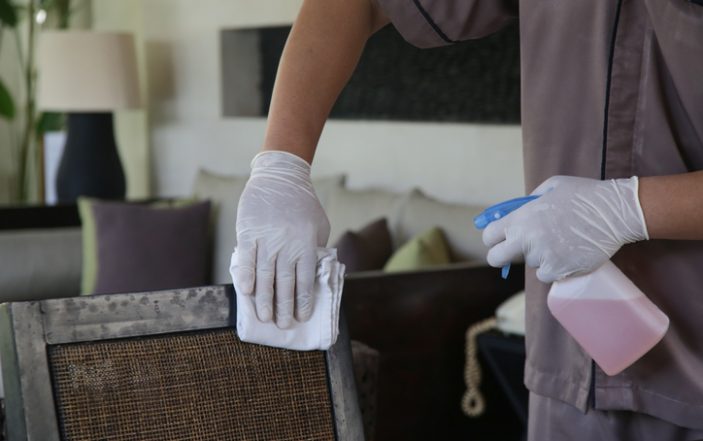Another COVID-19 Myth Dies the Death
https://www.aier.org/article/another-covid-myth-dies-the-death/
No transmission of COVID by surface contact? Oh, no! How are we ever going to coax the germaphobes to ever come out again?
– Mark Plaster, MD, JD
It’s good to know that Jeffrey Tucker is so prescient. These thoughts come to us from the American Institute for Economic Research, who also spoke out against the effectiveness of masks and social distancing, and advocated for herd immunity to beat COVID-19 (Sweden, how is that working for you?). It is not embarrassing that science was putting forth credible recommendations to fight a virus that we were still learning about in order to help stem the hundreds of thousands of deaths worldwide. Jeffrey, maybe you are having too much “Bourbon for Breakfast?” (https://mises.org/library/bourbon-breakfast)
– Evie Marcolini, MD
This is why testing for an airborne virus on surfaces is so flawed. It tests for virus particles, but not live virus which can spread. I am glad to see this myth debunked. COVID-19 is an airborne virus. For those in the back I will say it again. COVID-19 is an airborne virus!!!
—Salim R. Rezaie, MD
Directly from the CDC web site (https://b.link/COVIDfomites): “the risk of SARS-CoV-2 infection via the fomite transmission route is low, and generally less than 1 in 10,000” and “the risk of fomite transmission after a person with COVID-19 has been in an indoor space is minor after 3 days (72 hours), regardless of when it was last cleaned.” And yet bleach and surface cleaner are still sold out at many grocery stores. The medical community is doing a poor job of relaying pertinent information about COVID to the public. And we wonder why some people don’t trust doctors…
– William Sullivan, DO, JD
COVID-19’s impact on pediatric respiratory and non-respiratory illnesses
It would make sense that the spread of droplet borne pathogens would be decreased by mask wearing and social distancing. But it would also be possible that respiratory illnesses, often seen as inconvenient, but survivable, would not seek medical care in pandemic of a feared virus. So I think studies that look at the problem from the 30,000 foot level are less valuable than one that looked at individual patients and whether they didn’t get sick or didn’t seek care when they did get sick.
– Mark Plaster, MD, JD
The more we stay home, the less our germs spread. On the face of it this makes sense. The best place to be exposed to germs is still in a hospital ED. The pandemic has helped us to develop better methods to address non-urgent diagnoses, driving utilization of more appropriate settings.
– Evie Marcolini, MD
I still have cognitive dissonance over why, despite both viruses measuring 80-120 nm and having the same mode of transmission, influenza is nonexistent when COVID is widespread. The drop of 30% to 40% in expected pediatric ED visits for all respiratory illnesses doesn’t make my head hurt any less. Runny nosed kids in their classroom petri dishes seemed to be vectors for influenza. But if the booger to mouth spread of influenza has stopped with school closures and social distancing, why is COVID so prevalent? I’m not so convinced the decrease is still due to lack of seeking medical care. Maybe COVID is spreading in kids, but just doesn’t cause many symptoms?
– William Sullivan, DO, JD
It’s not a surprise that we have seen a decrease in respiratory illnesses in the pediatric population. Close down schools, wear masks, avoid indoor activities and wash your hands and there you have it…way less flu and RSV.
—Salim R. Rezaie, MD
Patients waiting for Medicare leads to cancer diagnoses increase
Very demonstrative of what I suspect we all knew — people without health care don’t see doctors. This is a sad commentary on the country with the largest economy in the world. What are we spending it on that is more important than health care?
– Evie Marcolini, MD
This is a far bigger problem than cancer diagnoses at the age of 65 years. Healthcare in the US and lack of insurance is the issue. This is why emergency medicine is the backbone of healthcare in this country. EM is always busy and used as a primary care office in so many instances. How many patients get diagnosed with incidental things just from visits to the ED? It’s simply because they can’t afford preventative care. I am not surprised by the findings of, as soon as patients are insured, the number of cancer diagnoses increases. Focusing more resources toward preventative care is what is needed.
—Salim R. Rezaie, MD
My wife thought she needed knee surgery at age 64, but our insurance wasn’t going to cover it. So she ended up waiting until she was 65 to really consider it. By that time the pain had gone away. Sometimes it’s better not to be too insured.
– Mark Plaster, MD, JD
Cancer diagnoses DOUBLE between age 64 and age 65 and then decline every year thereafter. Patients older than age 65 had lower cancer mortality rates than uninsured patients younger than 65. I agree that too much insurance may encourage “wallet biopsies,” but we need to find a way to help patients who forego necessary medical care because of payment issues. SMH.
– William Sullivan, DO, JD





